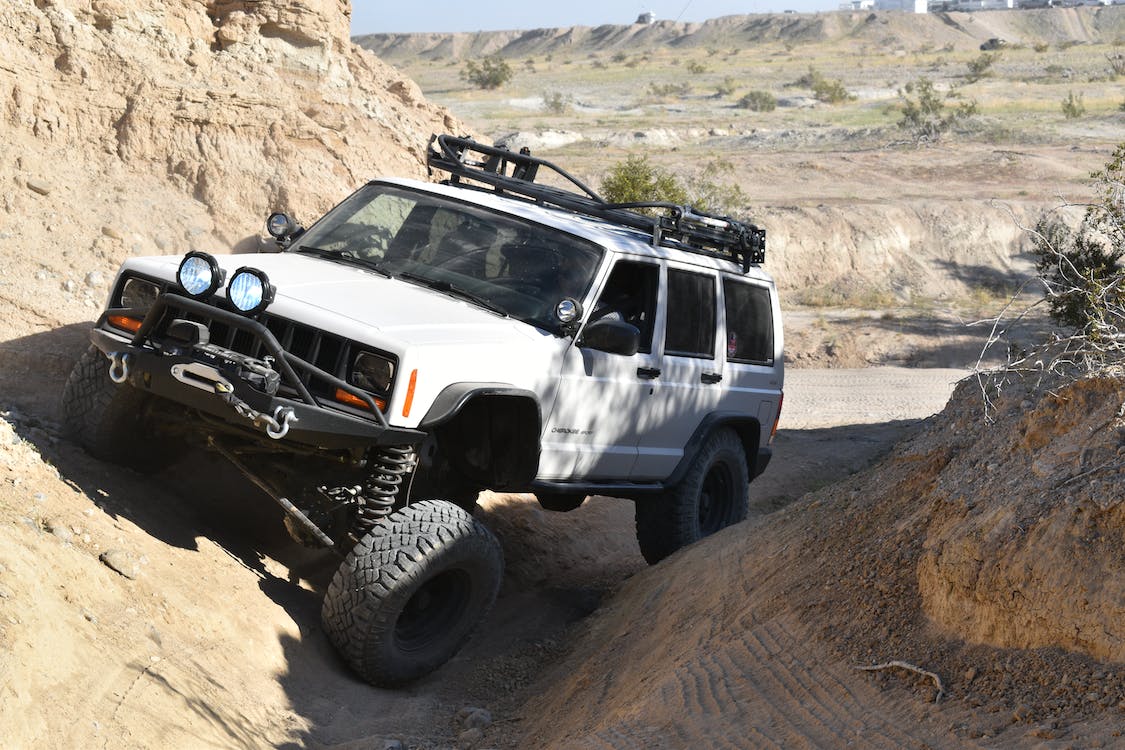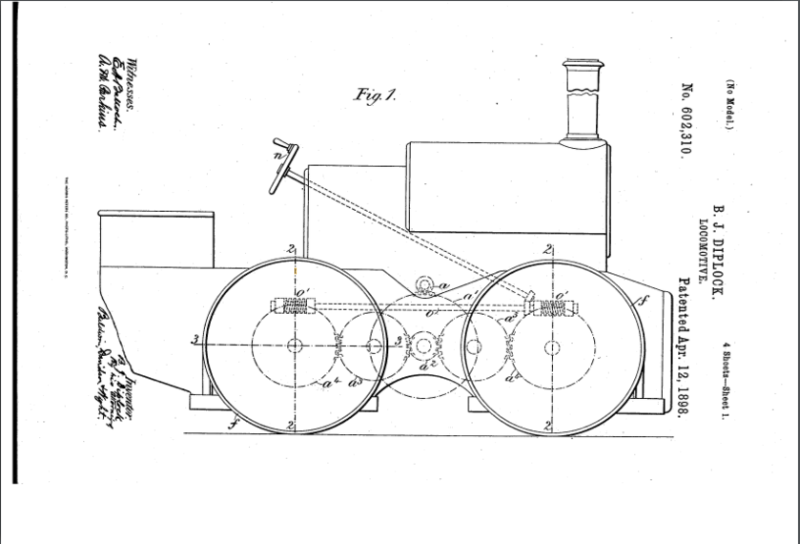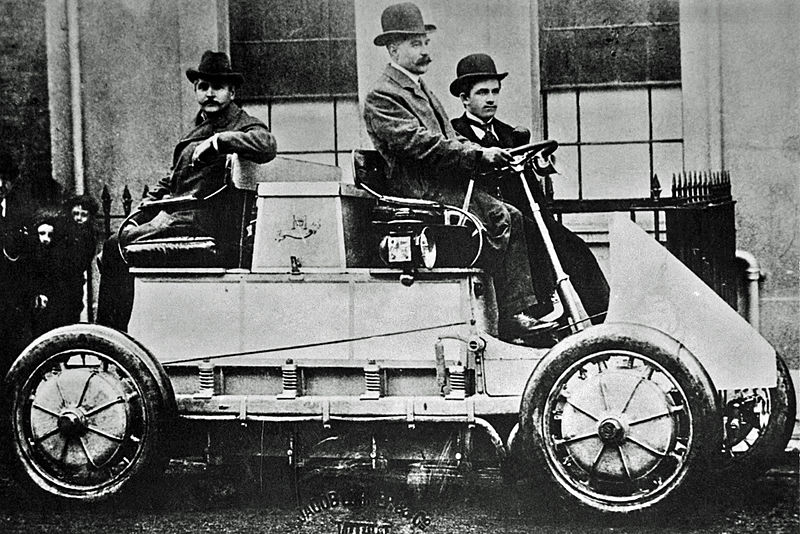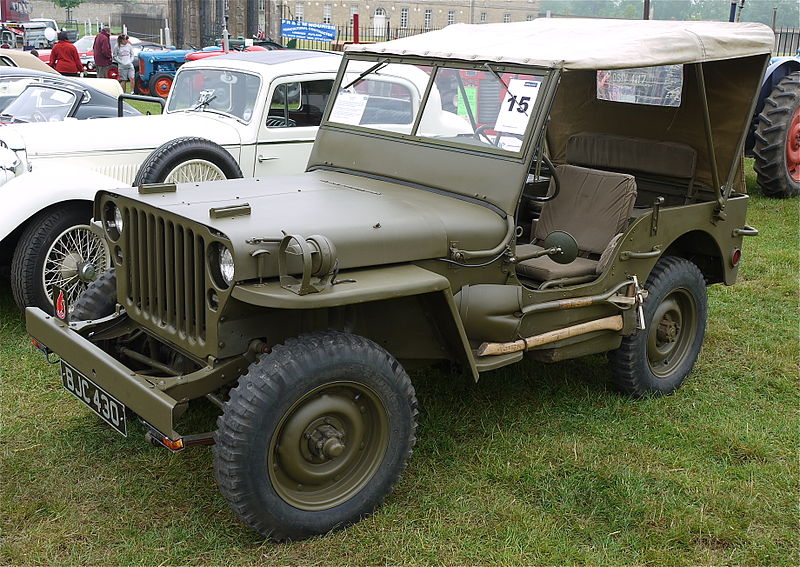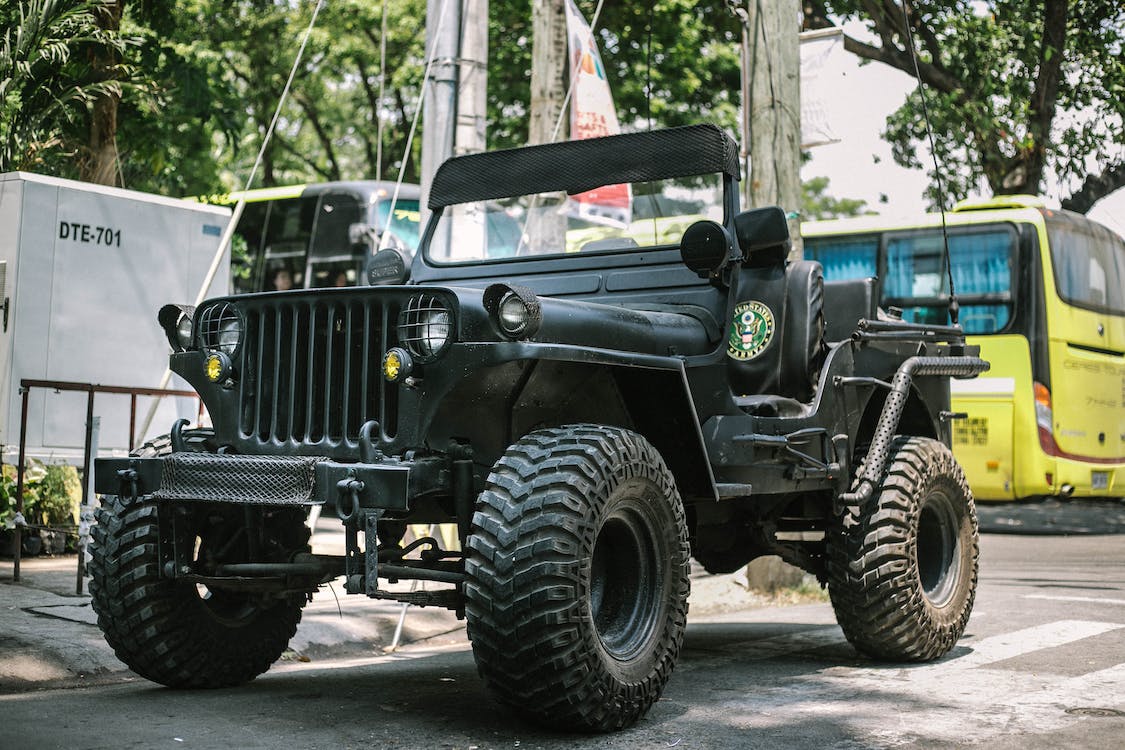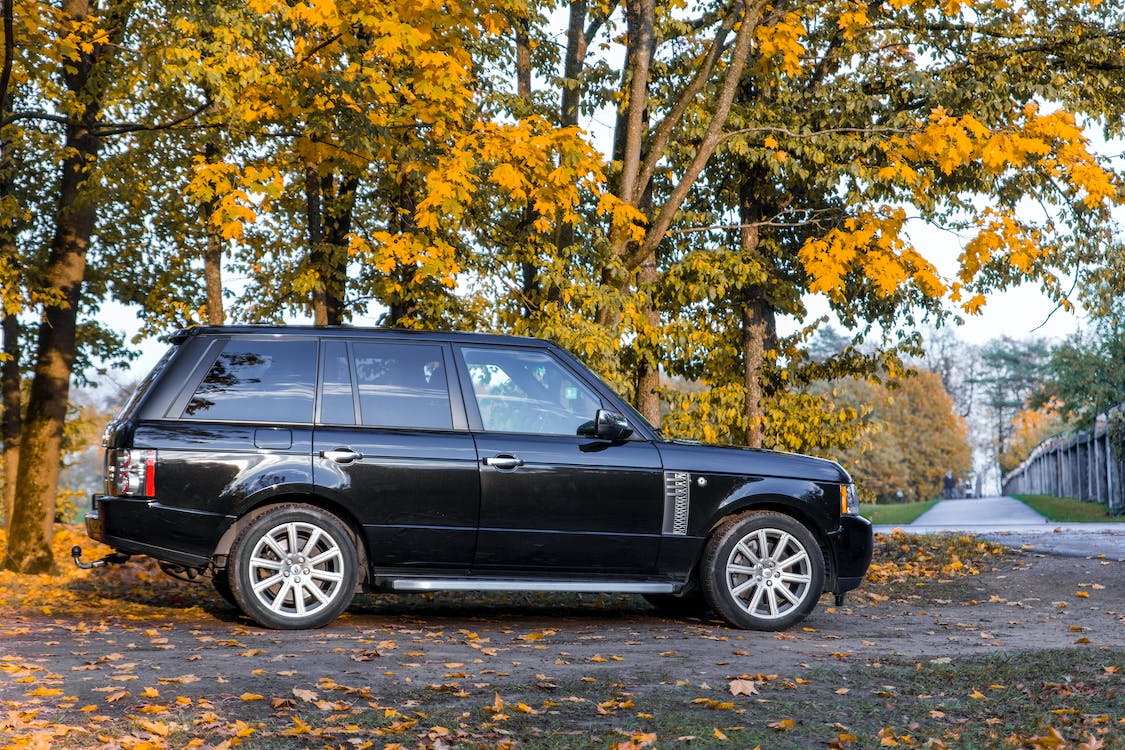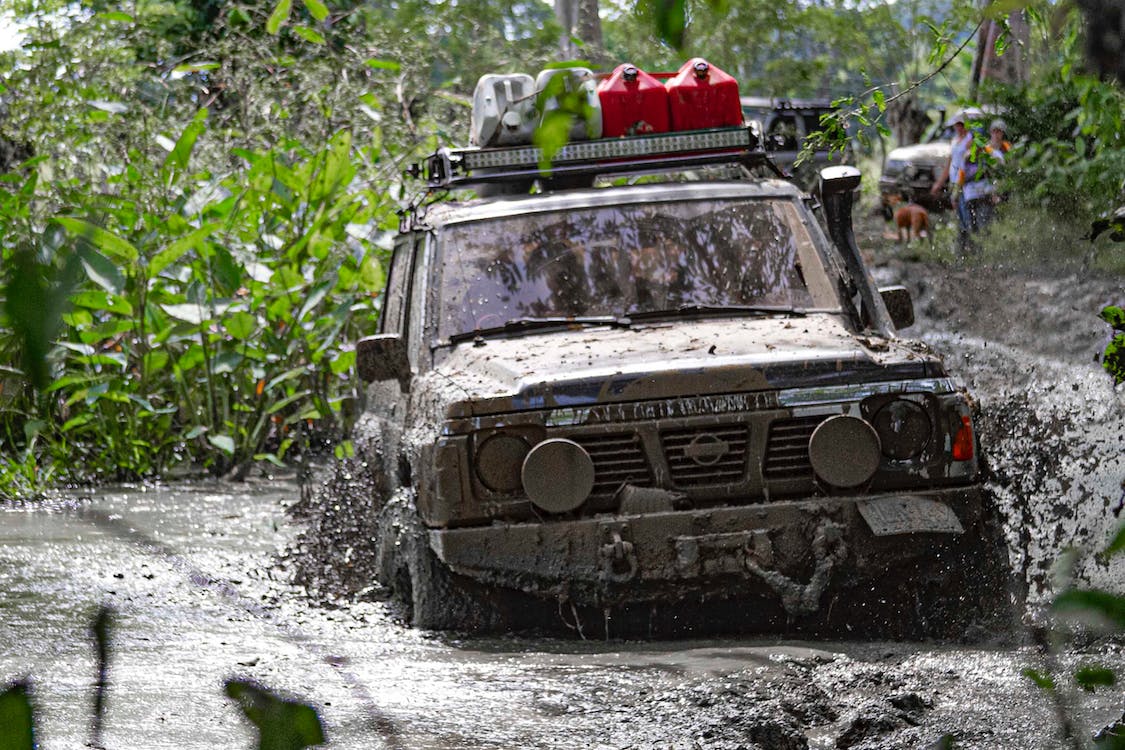This article gives you the information and insights need to go off on spectacular off-road trips, whether you’re an experienced enthusiast or a curious newbie. We will dig into the world of 4x4s, from navigating difficult terrain to comprehending key aspects. Discover the technical innovations that enable these cars to operate well in harsh environments and pick up vital advice and skills for fun and safe off-roading.
We will also offer helpful advice on upkeep, personalization, and accessories so you may improve the performance of your 4×4 and tailor your trips. Join us on an off-road journey as we use “The Ultimate Guide to 4x4s” to unleash the potential of adventure. Visit here to learn more about 4x4s vehicle accessories & equpiment.
What is a 4x4s vehicle?
Four-wheel drive, often known as 4WD or 4×4 (“four by four”), is a two-axled vehicle powertrain that can deliver torque to each of its wheels at the same time. It is often connected via a transfer case that offers an additional output drive shaft and, frequently, other gear ranges. It may be full-time or on-demand.
“All-wheel drive” (AWD) refers to a four-wheel drive vehicle that delivers torque to both axles. On the other hand, “four-wheel drive” normally refers to a specific set of features and applications intended for off-road use, which generally fits with modern use of the terminology.
History
The late 1800s
Before the current automotive industry was established in Britain in 1893, English engineer Bramah Joseph Diplock invented a four-wheel drive system with three differentials and four-wheel steering for a steam-powered traction engine, which was subsequently built. In addition, Bramah’s Pedrail wheel system was included in the design of one of the first four-wheel drive vehicles to exhibit an intended capacity for navigating difficult road surfaces. It sprang from Bramagh’s earlier concept of creating an engine that would minimize harm to public roadways.
1900s-1920s
The Dutch Spyker 60 H.P. has a front-engine, four-wheel-drive configuration and was the first four-wheel-drive vehicle in the world to be directly driven by an internal combustion engine. It was built in 1903 for the Paris to Madrid race and delivered that year by Amsterdam brothers Jacobus and Hendrik-Jan Spijker. The two-seat sports automobile was the first to have a six-cylinder engine and four-wheel brakes. It also had permanent four-wheel drive. It was afterward employed as a hill-climb racer and is currently on display at the Louwman Museum in the Hague, the Netherlands (formerly known as the Nationaal Automobile Museum).
1930s
To meet the expanding demand for reasonably cost four-wheel-drive automobiles, the American Marmon-Herrington Company was established in 1931. With contracts for military and commercial aircraft refueling trucks, 4×4 chassis for towing light weapons, and an order from the Iraqi Pipeline Company for the largest trucks ever made, Marmon-Herrington, a company that specialized in converting Ford trucks to four-wheel drive, got off to a strong start.
The early Marmon-Herringtons turned out to be an exception; 4WD vehicles manufactured in the 1930s were mostly made for governments with (future) military purposes in mind.
The Kurogane Type 95 reconnaissance automobile, produced by the Japanese firm Tokyu Kurogane Kogyo beginning in 1936, was used by the Imperial Japanese Army from 1937 to 1944 during the Second Sino-Japanese War. A 1.3-liter, two-cylinder, air-cooled OHV V-twin engine was used to power three different body designs: a two-door roadster, a two-door pickup truck, and a four-door phaeton. Each was fitted with a transfer case that engaged the front wheels.
World War II – a leap in AWD proliferation
Four-wheel drive and all-wheel drive vehicles had not yet found a place in the military until “go-anywhere” vehicles were required for the military on a wide scale. Initially created by American Bantam but mass-produced by Willys and Ford, the World War II Jeep quickly became the world’s most well-known four-wheel-drive car. The Canadian Military Pattern trucks, of which 4x4s were by far the most common of their numerous driveline configurations, and the American Dodge WC series and Chevrolet G506 4×4 variations, were also built in the hundreds of thousands.
Availability of certain critical components, such as transfer cases and especially constant-velocity joints affected development. Even though they were not frequently employed on commercial vehicles, all-wheel drive vehicles required them since they used two or three times as many driven axles, which required extra gears to be cut for each differential. From the spring of 1942, Ford, Dodge, and Chevrolet joined in on the production of these, which had previously been made by a small number of specialist companies with limited capacity in an amount that was more than 100 times more than in 1939.
Different 4X4 Systems
These days, 4×4 vehicles commonly fall into four different categories.
Full-time 4WD
In the first generation of 4×4 cars, all four wheels simultaneously received equal engine power. Although these systems can drive over rough terrain, they tend to make vehicles heavier.
Part-time 4WD
Your car has part-time 4WD if it has a mechanical or electrical switch that allows it to transition between 2WD and 4WD. While there is no danger in leaving it in 4WD at all times, the only advantage to moving between the two is a little reduction in fuel consumption.
It is crucial to emphasize that all-wheel drive (AWD) and 4-wheel drive (FWD) vary fundamentally from one another. While 4WD needs a slick surface for the front and back ends to move at the same pace, AWD may be employed on dry roads. It’s a good idea to always drive in four-wheel drive mode on and off the road if your 4X4 offers the choice between two-wheel drive and four-wheel drive.
The greatest 4x4s of all time
WWII US Army Jeep: The Godfather
The Willys-Overland MB or the Ford GP are the two names of the two manufacturers who built the majority of the WWII Jeeps used by the US Army. though its design owes far more to the army than any single car company. And the Bantam firm deserves the greatest praise among the other automakers engaged in its creation.
It was not even given the name Jeep until after it had already been through design and development; the name came later. The origin of the name is still a subject of debate today. It was not until 1950 that the Jeep name was formally registered after Willys-Overland claimed ownership on the basis that it had manufactured the most Jeeps during the war than any other company.
The Jeep story begins in 1938, a year in which the US military needed modernization. It issued several hundred bids for a wide variety of military vehicles and tools, one of which was for a command reconnaissance vehicle. The Army established incredibly tight standards for engine size, power, and performance. It had to have 4WD as well.
The Army’s requirements were so stringent that Ford’s subsequent prototypes as well as the initial ones from Bantam and Willys-Overland were all rejected. After several redesigns and concerns that the Army was surreptitiously passing blueprints between bidders, what was essentially the final version was chosen by mid-1941. The independent chassis and live axles at both ends supported by leaf springs were at the heart of the design. This ended up serving as the standard for 4×4 plans for many years.
Jeeps performed all the duties required of them by the US and Allied military during the war, and then some. They were used for much more than just reconnaissance. They served as troop transporters, supply wagons, machine gun platforms, and trailers for various weapons and aircraft. When a locomotive was not available, they pulled railroad rolling equipment by being hitched together and given steel wheels. But more than anything else, the Jeep was incredible off-road.
Toyota Land Cruiser 40 Series: The Rising Son
Travel back in time to 1950, only five years after the conclusion of the war, and you will discover that Japan was virtually occupied by the US military as the Americans worked to change the country’s economic and social structure and dissolve its armed forces. Japan was only permitted to purchase American-made new military hardware for its self-defense army.
All of that changed in 1950 when hostilities in nearby Korea broke out and new demands were placed on US military manufacturing. As a response, the Americans requested that the Japanese automakers create light 4x4s and other vehicles that could be built quickly and in large quantities.
To make a long tale short, Toyota’s initial attempt resembled a US military Jeep a lot. It had live axles and leaf springs on both ends, just like the Jeep. It was given the designation BJ, where B stood for the six-cylinder engine and J stood for Jeep. Before Willys-Overland was successful in pursuing a trademark infringement lawsuit, the new car was first referred to as a Toyota Jeep.
Land Rover: Earth Roamer
The Land Rover, like the 40 Series Toyota, supports the Army Jeep’s relevance by having a Jeep-related past. In truth, the 1947 design of the first Land Rover was inspired by a WWII Jeep that Rover’s technical head Maurice Wilks drove at his rural home in Wales, United Kingdom.
Given the weak post-war market demand for its upscale saloons at the time, Rover desperately required a new model to boost sales. Wilks’ wartime surplus Jeep was working out perfectly for him on his farm, which made him wonder whether a similarly adaptable, straightforward, and durable vehicle that was designed for farmers rather than the military would be precisely what the injured Rover needed to get better.
The plan received approval from Rover management in a matter of months, even before the prototype was constructed (on a Jeep chassis, no less).
It was important to construct the Land Rover as rapidly and inexpensively as possible since it was considered to be a stopgap vehicle. Due to a shortage of steel, this required the usage of flat body panels constructed from war surplus aluminum alloy. It also implied using the barest amount of tools.
Range Rover (1970): Master class
Charles Spencer King, Rover’s head of new vehicle projects at the time, came up with the idea for the first Range Rover in 1970. It was simply intended to be a passenger 4×4 rather than a work 4×4 like the Land Rover.
Even though it was ultimately successful, not everyone at Rover was certain that Spen King (as he was called) was on the correct route at the time. Glover notes that Pen King approached 4×4 design from a completely another design perspective, namely all-coil suspension, after driving a Rover car through a recently tilled field.
Four-wheel drive was first used continuously in the Range Rover. It reduces fuel consumption and tire wear, and it provides improved grip, a crucial safety aspect. On slick, dangerous roads, the security is excellent.
The Range Rover became an overnight sensation all over the world and was in production for more than ten years until the four-door variant was released in 1981. It lasted until 1996, two years after the introduction of the second-generation Range Rover, with different upgrades.
Toyota Hilux: Workers’ Choice
In 1968, the first HiLux model was released as a 4×2. It was slightly smaller than the Toyota Stout light truck of the time, and it was offered alongside the Stout in certain areas while it was superseded in others.
In 1972, the second-generation HiLux was released, however, it was once again just 4×2. The first HiLux 4×4 would not be available to buyers until 1978, a year after the third generation. It had live axles and leaf springs on both ends, unlike 4×2 variants. At the time, there was just a single cab model available; twin cab variants did not come out until 1982.
The Toyota Stout had a dual-cab variant in 1960, and there were others before that, so the HiLux was not the first dual-cab truck. But there’s no denying that the HiLux 4×4 double-cab from 1982 catalyzed the global adoration of dual-cab 4×4 utes.
Nissan Patrol GQ: Coils for the spoil
Because of its long-travel coil springs, the GQ Patrol, which Nissan introduced in 1987, not only offered superior on-road comfort than the leaf-sprung Land Cruiser 60 Series of the time but also gave better off-road performance.
The GQ was not Nissan’s first family or recreational 4×4, though. That distinction belongs to the Patrol’s predecessor, the MQ, which signaled the organization’s first substantial shift in strategy.
Nissan created its first Patrol about the same time that Toyota created its first Land Cruiser, and for the same reason as Toyota: to satisfy a request from the US military for a lightweight 4×4 that could be simply and swiftly created after war broke out in the adjacent country of Korea in 1950. Similar to the original Land Cruiser, the initial Patrol resembled a WWII Jeep in many ways.
Toyota Land Cruiser 60 Series: Broadening the family tree
In 1976, Toyota began making preparations for the 60 Series. A larger, family-oriented 4×4 was proposed to compete with the Jeep Wagoneer in the expanding US market segment.
The 60 Series required to feel more like a passenger station wagon, similar to the Wagoneer, with a smoother ride and a more opulent, well-equipped interior.
A modified version of the live-axle leaf-spring suspension system from the older FJ55 was chosen over an independent front suspension for the 60, exactly like the Wagoneer. Coil-sprung live axles, like those seen on the Range Rover, were not taken into account; they would appear on the 80 Series a decade later.
Toyota’s first station wagon was not the 60. Long-wheelbase wagon variations of the 40 (45 Series) and, more crucially, the FJ55 existed before the 60. However, unlike the 60, neither the 45 nor the 55 were created primarily for the recreational market.
The well-liked HJ60 was released in 1982 and features a larger six-cylinder, 4.0-liter 2H diesel engine. The HJ60 was the 60 Series range’s defining car in many aspects. The HJ60 included a five-speed gearbox, an optional sunroof, power mirrors, and other luxuries in addition to its larger engine.
Conclusion
Four-wheel drive (4WD) has a long history dating back to the late 1800s, but during World War II, these systems rose to popularity. With its legendary off-road prowess and adaptability during World War II, the Jeep rose to become the most well-known 4WD vehicle on the planet. With improved traction and off-road capabilities in a variety of vehicles, both for military and civilian uses, 4WD and AWD systems are still developing today.

